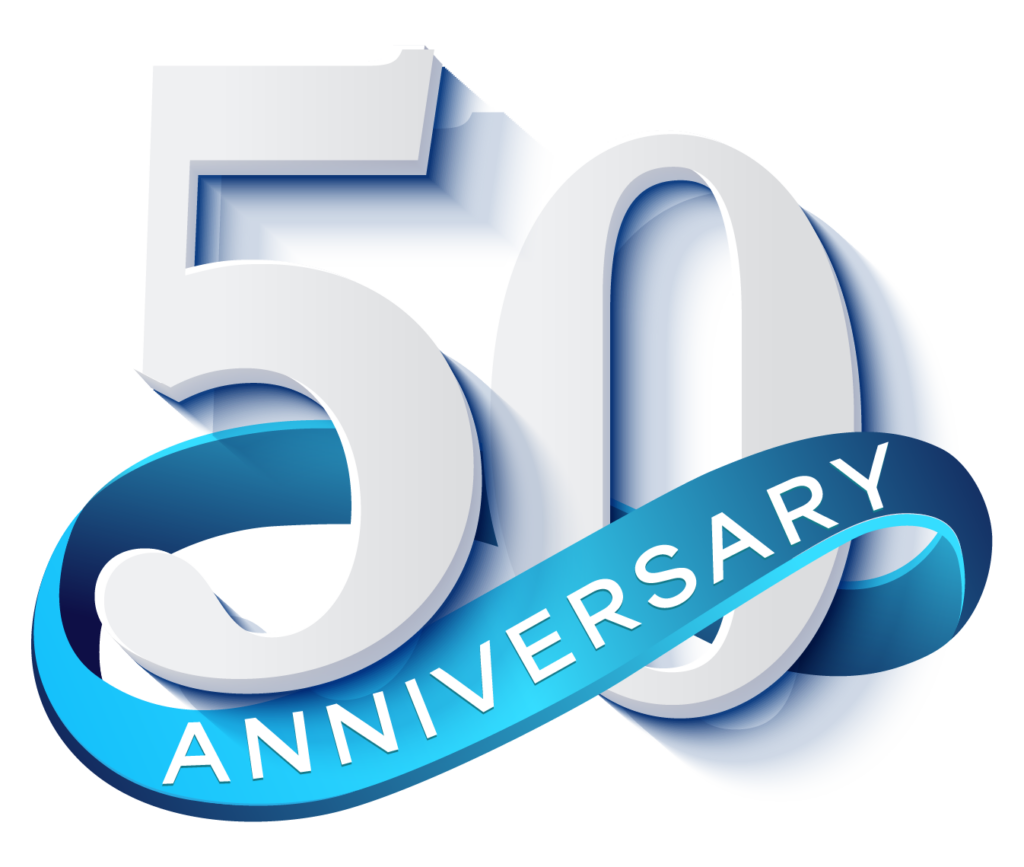In the cutthroat arena of modern businesses, effective teamwork is not just a desirable trait; it’s a necessity for survival and success. It’s the linchpin that holds together the intricate machinery of an organization, propelling it toward innovation, productivity, and growth.
But, in the maze of team dynamics, there lies an evasive key that can unlock the gates to triumph. It’s an understanding of what foundational issue most often leads to team dysfunction, a precursor to a myriad of root causes that plague teams and hinder their progress.
In this guide, we won’t just scratch the surface. We’ll delve deep into the heart of team dysfunction, deciphering its origins, manifestations, and what foundational issue most often leads to team dysfunction.

Understanding Team Dynamics
Team dynamics are the web of interactions and synergies that drive teams toward success or plunge them into dysfunction. To truly address team dysfunction, we must first grasp the distinction between dynamics and dysfunction, as they form the foundation of exploring what foundational issue leads to team dysfunction.
Dynamics vs. Dysfunction: Unpacking the Difference
Team dynamics, in essence, represent the interaction of individual personalities, working styles, and aspirations within a group. In a well-functioning team, these dynamics harmonize, creating a synergy that drives the team toward their common goals. Dysfunction, conversely, is the antithesis of this synergy. It’s the lurking problem, the Achilles’ heel, and the drain on productivity.
That’s where tools like Personalysis come into play. Personalysis is a science-based personality assessment that provides a clear roadmap to help you appreciate, respect, and work with the dynamic differences that exist between teams and employees. It offers an in-depth understanding of each team member’s strengths, preferences, and communication styles, which is invaluable in fostering synergy.
Additionally, the Personalysis Executive Intensive Program empowers leaders to maximize their potential and create an environment where employees feel valued, understood, and motivated to contribute their best. It’s a strategic investment in nurturing functional teams, setting the stage for lasting success.
Ready To Take Your Business To The Next Level?
The Power of Synergy: How Functional Teams Operate
Functional teams are like well-orchestrated symphonies, where each instrument (team member) plays its unique part, resulting in a harmonious masterpiece. Synergy in these teams is not an abstract concept; it’s a tangible, powerful force. It’s not just about making the whole greater than the sum of its parts; it’s about making it exponentially greater.
Statistics tell us that functional teams significantly outperform their dysfunctional counterparts. A survey conducted by McKinsey found that highly effective teams are 2.2 times more likely to exceed their financial targets, twice as likely to exceed their non-financial targets, and 1.9 times more likely to be satisfied with their work.
But how do you harness this synergy? How do you transform a group of individuals into a high-performing team? That’s where the magic of understanding team dynamics comes into play, and this magic often begins with the insights offered by tools like Personalysis.
The Foundation of Dysfunction
Dysfunction doesn’t materialize out of thin air; it often emerges from an environment lacking psychological safety. Understanding this fundamental cornerstone of successful teams sets the stage for identifying what foundational issue most often leads to team dysfunction and mitigating it.
Building the Framework: Identifying the Core Issue
Before we delve into the details of how to address team dysfunction, you must recognize its foundational elements. Dysfunction often germinates in an environment lacking psychological safety, a place where team members feel vulnerable, anxious, or unheard. This underlying unease can lead to a cascade of issues, creating a hostile breeding ground for dysfunction.
Psychological Safety: The Cornerstone of Successful Teams
Psychological safety is the beating heart of a well-functioning team. It’s the confidence team members have in expressing themselves without fear of retribution. In a psychologically safe environment, creativity flourishes, and individuals feel empowered to voice their opinions and make suggestions.
However, the erosion of psychological safety is a pervasive problem in many teams. A study conducted by Amy Edmondson, Novartis Professor of Leadership and Management at Harvard Business School, found that most employees don’t feel comfortable speaking up at work. This reluctance to express oneself is a red flag signaling potential dysfunction. It’s the silence before the storm, the hesitation that stifles innovation, and the fear that paralyzes progress.
To restore psychological safety, leaders must acknowledge its significance and actively work on creating an environment where it thrives. It’s not about encouraging everyone to speak up haphazardly but fostering a culture where individuals feel heard and valued.
The Personalysis assessment tool is a powerful ally in this endeavor. It provides deep insights into team members’ communication styles, preferences, and the factors that can either encourage or inhibit them from speaking up. Armed with this knowledge, leaders can tailor their approach to ensure that psychological safety becomes an integral part of the team’s culture.
The Erosion of Psychological Safety
Psychological safety is the basis of functional teams, yet it is increasingly eroding in many workplaces. Recognizing the signs of its erosion and its dire consequences is crucial to understanding what foundational issue leads to team dysfunction.
Signs of Eroding Trust: Red Flags in Team Communication
Communication is the lifeblood of any successful project. It’s how ideas are shared, problems are solved, and decisions are made. But when psychological safety diminishes, communication becomes strained. Team members may withhold their ideas, fearing ridicule or backlash. This hesitancy to speak up can result in missed opportunities and unresolved issues, which ultimately hinder team progress.
One of the striking statistics from a Gallup study is that only 13% of employees worldwide are engaged at work. This means that a whopping 87% are not fully involved in their jobs. While there are many factors contributing to this disengagement, one significant aspect is the lack of psychological safety and open communication within teams.
Fear of Failure: Its Detrimental Impact on Team Performance
In an environment where psychological safety is compromised, the fear of failure looms large. Team members are hesitant to take calculated risks or propose innovative solutions, fearing the repercussions of potential mistakes. This stifling of creativity and innovation is detrimental to team performance.
Research published in the Journal of Organizational Psychology has shown that organizations fostering an environment where failure is viewed as a learning opportunity have higher innovation rates. In other words, creating an atmosphere where team members feel safe to take calculated risks can lead to significant advantages in terms of creativity and progress.
The ability to embrace failure as a stepping stone to success is a mindset that must be cultivated within the team. It’s about shifting the perspective from “fearing failure” to “learning from failure.” It’s a transformation that leaders must guide and encourage.
Communication Breakdown
The breakdown of communication is often a symptom of deeper issues within a team. To understand how to bridge this gap, we must delve into the dangers of ineffective communication and the misinterpretations that can sow the seeds of dysfunction.
Silence Speaks Volumes: The Dangers of Ineffective Communication
When communication falters, dysfunction thrives. Ineffective communication is often a consequence of the underlying issues related to psychological safety. The unspoken concerns and the unsaid opinions create a chasm within the team, preventing the free flow of ideas and feedback.
A study by Edith Cowan University found that organizations with ineffective communication are 50% less likely to have low employee turnover. The cost of poor communication isn’t just measured in frustration and inefficiency; it’s also reflected in higher attrition rates, which can be a significant financial burden.
To tackle this issue, leaders must be proactive in promoting transparent communication. They should encourage open dialogue, active listening, and the sharing of diverse perspectives. Creating a safe space for discussions, where team members can express their thoughts without fear, is vital.
Misinterpretation and Assumptions: Navigating the Communication Minefield
The absence of transparent communication can lead to misunderstandings and assumptions. Team members may interpret actions or statements in ways unintended by the communicator, resulting in conflicts and strained relationships. These conflicts can escalate, driving a deeper wedge within the team.
Miscommunication and misunderstandings are the leading causes of workplace conflicts. The implications of these conflicts are vast and may range from a drop in productivity to a hostile work environment.
To navigate this minefield, it’s crucial to implement effective communication strategies, such as regular check-ins, feedback loops, and encouraging clarifying questions. The goal is to minimize assumptions and ensure that everyone is on the same page.
Lack of Clear Roles and Responsibilities
When roles and responsibilities are unclear, confusion and conflict can take root. To unearth the foundational issue of ambiguity within teams, we need to explore how well-defined roles create a stable ground for productivity.
Role Ambiguity: Fostering Confusion and Conflict
In a functional team, roles and responsibilities are well-defined, leaving no room for ambiguity. However, when these are unclear or overlapping, it creates a breeding ground for confusion and conflict. Team members may find themselves stepping on each other’s toes or hesitating to act due to uncertainty.
Establishing Accountability: The Role of Defined Responsibilities
Addressing role ambiguity is a pivotal task for leaders. Roles and responsibilities must be clearly defined and communicated to each team member. This clarity not only reduces conflicts but also fosters a sense of accountability, as individuals know precisely what is expected of them.
Mismatched Goals and Objectives
Conflicting goals within a team can be a silent precursor to dysfunction. Unraveling this issue starts with understanding how misaligned objectives can lead to competition rather than cooperation.
The North Star Misalignment: Navigating Conflicting Team Objectives
When team members pursue divergent goals and objectives, dysfunction is inevitable. Conflicting goals can lead to competition within the team, rather than cooperation. This misalignment can hinder progress and create a turbulent work environment.
Statistics from the Project Management Institute (PMI) indicate that 37% of projects fail due to a lack of clear goals and objectives. This statistic underscores the critical importance of aligning team goals.
Cultivating Cohesion: The Art of Harmonizing Divergent Goals
To mitigate this, teams must align their objectives, ensuring that every team member is working toward a common goal. This alignment requires effective leadership, as we shall discuss shortly.
Leaders must communicate a shared vision and purpose, helping team members understand how their individual goals contribute to the team’s overall success. It’s about turning a group of individuals into a unified force working together.
Leadership and Its Influence
Leadership is the rudder that steers teams in different directions. To comprehend its role in team functionality, we must explore the impact of authoritative and collaborative leadership styles, setting the stage for the importance of adaptable leadership.
The Captain’s Impact: How Leadership Style Shapes Team Functionality
Leadership is a cornerstone in shaping team functionality. A leader’s style, whether authoritative or collaborative, can significantly impact how a team operates.
However, there is no one-size-fits-all approach to leadership. Effective leaders understand the dynamics of their team and the unique strengths and preferences of each team member. This knowledge empowers them to provide the guidance necessary to navigate away from dysfunction and towards synergy.
Authoritative vs. Collaborative Leadership: Implications for Team Performance
Authoritative leadership, characterized by a strong top-down approach, can be effective in some situations, but it may hinder psychological safety and limit open communication. On the other hand, collaborative leadership, which encourages shared decision-making and open dialogue, often leads to higher levels of trust and team cohesion.
Choosing the right leadership style depends on the specific needs of the team and the nature of the task. What’s crucial, however, is that leaders are adaptable and capable of switching between styles when necessary to foster an environment of trust and collaboration.
To further develop these leadership skills, consider the Personalysis Executive Intensive Program. This program is designed to help leaders understand and appreciate the dynamic differences within their teams, providing them with the knowledge and tools needed to create a culture of trust and collaboration. By pushing your leadership to the next level with the Personalysis Executive Intensive Program, you can be the captain who steers your team toward synergy.
Ready To Take Your Business To The Next Level?
Absence of Constructive Feedback
Feedback is the compass that guides individuals and teams toward improvement. In its absence, teams stagnate, and dysfunction festers. The lack of feedback creates an environment where issues go unaddressed, and team members are left unaware of their areas for improvement.
Feedback Vacuum: The Silent Killer of Team Growth
A study by Zenger Folkman found that employees who received corrective feedback were 20 times more likely to be engaged. This statistic highlights the impact of feedback on employee engagement and, by extension, team performance.
Constructive feedback is not just about pointing out flaws; it’s about recognizing strengths, acknowledging progress, and providing guidance for growth. It’s a tool for continuous improvement, and leaders must use it wisely.
The Feedback Loop: Cultivating a Culture of Constructive Critique
Cultivating a positive work culture of feedback is essential for team growth. Encouraging team members to provide constructive criticism, and being receptive to it, is vital for overcoming dysfunction. Regular feedback sessions can help identify and address issues early, preventing them from escalating.
Feedback should be a two-way street. Leaders should not only provide feedback to team members but also actively seek feedback from them. This openness to feedback fosters trust and demonstrates a commitment to mutual growth.
Handling Conflict and Disagreements
Disagreements are inevitable within any team, but the way they are managed can be the difference between dysfunction and healthy debate. When conflicts are left unaddressed or escalate into personal disputes, team dynamics suffer.
Clash of Perspectives: Managing Disagreements Within Teams
Disagreements often stem from differing perspectives and approaches to problem-solving. While these differences can be valuable, they can also lead to conflicts if not managed effectively.
A study published in the Project Management Institute found that teams that have a cooperative conflict management style bolsters high team performance. The ability to harness the diversity of thought within a team is a valuable asset, but it requires effective conflict management.
Conflict Resolution Strategies: Navigating Turbulent Team Waters
Effective conflict resolution involves open communication, active listening, and a commitment to finding mutually beneficial solutions. Leaders must act as mediators when necessary, guiding team members toward constructive resolutions.
It’s also beneficial to establish clear conflict-resolution processes within the team. Team members should know how to raise concerns, what steps will be taken to address them, and the role each person plays in the resolution process.
Cultural and Personality Differences
Diversity within teams can be a double-edged sword. To navigate this complexity, we must delve into the potential benefits and challenges of cultural and personality differences and how inclusivity can bridge these gaps.
Unity in Diversity: Leveraging Differences for Team Prosperity
Diversity, whether in terms of cultural backgrounds or personality traits, can be a powerful asset for a team. Differing perspectives bring a broader range of ideas and approaches to the table. However, if these differences are not well-managed, they can lead to dysfunction within the team.
Research from Harvard Business Review shows that diverse teams are more innovative and better at problem-solving. Yet, the challenge lies in harnessing this diversity without allowing it to become a source of tension. It’s crucial to create an environment where team members appreciate and learn from each other’s unique backgrounds and personalities.
Diversity training and workshops can be a helpful tool in addressing this issue. By educating team members about the benefits of diversity and providing them with the skills to work harmoniously in diverse teams, you can unlock the potential for increased creativity and effectiveness.
Resource Scarcity and Allocation
Resource scarcity can exacerbate dysfunction within teams. To understand this issue, we must explore the ripple effect of resource limitations and how optimizing resource allocation is critical for team functionality.
Resource Crunch’s Ripple Effect: From Frustration to Dysfunction
Resource scarcity can strain even the most functional teams. When team members are faced with limited resources, such as time, budget, or manpower, frustration can quickly give rise to dysfunction. The fear of not having enough to meet their objectives can erode team morale and cooperation.
Research from the Project Management Institute (PMI) indicates that poor resource allocation contributes to project failure. This highlights the need for effective resource management to prevent dysfunction within teams.
Optimizing Resource Allocation: Maximizing Output Despite Limitations
Effective resource allocation is a key skill for leaders in preventing team dysfunction. It involves assessing the available resources, understanding the team’s goals, and making informed decisions about how to best allocate resources for maximum impact.
Tools like project management software can assist in resource allocation by providing visibility into resource availability and utilization. Additionally, regular monitoring and adjustments to the allocation strategy can help ensure that the team’s needs are met.
By optimizing resource allocation, leaders can reduce frustration and enhance team productivity, mitigating one of the core issues that lead to dysfunction.
Technology and Remote Work Challenges
Remote work and technology have become integral, yet they present unique challenges. To transition into this discussion, we must recognize the hurdles remote teams face and how technology, while a boon, can also be a bane.
Virtual Hurdles: Navigating Dysfunction in Remote Teams
The rise of remote work has brought its unique set of challenges. Virtual teams often face issues related to communication, collaboration, and the use of technology. Dysfunctional remote teams may experience isolation, miscommunication, and reduced productivity.
Tech Advancements: Navigating the Double-Edged Sword of Virtual Collaboration
Technology is both the problem and solution for remote teams. While it can contribute to dysfunction when used ineffectively, it also offers tools and strategies to mitigate these issues.
The use of collaboration platforms, video conferencing, and project management tools can significantly enhance remote team performance. Providing training and resources for team members to effectively utilize these tools is vital.
Furthermore, establishing regular check-ins, setting clear expectations, and fostering a sense of belonging can help remote teams overcome dysfunction and operate at their best.
Lack of Mutual Respect
Respect is the glue that holds teams together. To delve into the consequences of its absence, we must first explore the impact of a respect deficit and how it unravels team harmony.
The Respect Deficit: Unraveling Its Impact on Team Harmony
Mutual respect is the bedrock of a well-functioning team. When team members do not show respect for one another’s ideas, contributions, or boundaries, dysfunction takes root. Disrespect can manifest as dismissive behavior, micromanagement, or even bullying, all of which hinder team productivity.
Cultivating Respect: A Two-Way Street for Fostering Positive Dynamics
Cultivating a culture of respect is essential to address this issue. Leaders should set an example by showing respect to team members and encouraging the same behavior among team members.
Implementing training on respect and inclusion can help raise awareness about the importance of this issue and provide guidelines for acceptable behavior. It’s essential for leaders to address disrespect promptly and constructively, ensuring that team members understand the consequences of their actions.
Respect should be a two-way street, with every team member committed to treating others with dignity. By establishing and maintaining a respectful culture, teams can avoid the dysfunction that results from a lack of mutual respect.
Burnout and Wellbeing
Burnout is a ticking time bomb in many workplaces. To understand its implications for team functionality, we must explore the toll it takes on individuals and the necessity of prioritizing well-being.
Burnout’s Toll on Functionality: A Ticking Time Bomb
Burnout, often caused by excessive workload, long hours, and a lack of work-life balance, can lead to team dysfunction. Burned-out team members are less productive, more irritable, and prone to making mistakes. If left unaddressed, burnout can quickly spread within a team.
According to a study by Gallup, 23% of employees reported feeling burned out at work very often or always. This alarming statistic indicates that burnout is a pervasive issue with significant implications for team functionality.
Nurturing Wellbeing: Prioritizing Mental Health for Team Success
Preventing burnout and prioritizing team members’ well-being is crucial. Leaders can create policies that promote a healthy work-life balance, encourage regular breaks, and provide resources for stress management and mental health support.
Team leaders should also watch for signs of burnout within their team and address the issue proactively. Promoting a culture where team members feel comfortable discussing their mental health is essential.
By prioritizing well-being and preventing burnout, leaders can maintain a healthy, functional team that operates at its best.
Managing Change and Uncertainty
We must recognize the impact of change on teams and the importance of effective change communication.
Winds of Change: Adapting to Prevent Dysfunction
Change is a constant in the business world, and managing it effectively is essential for team functionality. When team members resist change or are unsure about its implications, dysfunction can quickly emerge.
A McKinsey study found that 70% of change efforts fail to achieve their goals. This is often due to a lack of effective change management within teams.
Change Communication: Mitigating Uncertainty’s Disruptive Effects
Effective communication is key to preventing dysfunction during times of change. Leaders should communicate the reasons for the change, its expected impact, and the role team members will play in the process.
Moreover, involving team members in decision-making related to the change can help mitigate resistance and ensure a smoother transition. Change management methodologies, such as the ADKAR model, can provide a structured approach to handling change within teams.
By guiding teams through change and uncertainty with transparency and empathy, leaders can prevent the dysfunction that often accompanies such transitions.
Summary: Navigating the Path to Functional Teams
Team dysfunction is a formidable obstacle to success, but it’s not insurmountable. By understanding what foundational issue leads to team dysfunction and implementing strategies to address them, teams can transform into high-performing, functional units.
In this journey toward functional teams, the Personalysis personality assessment tool and Personalysis Executive Intensive Program can be invaluable allies. They offer insights, guidance, and a roadmap to navigate the complexities of team dynamics.
Ultimately, the true power of functional teams lies in their ability to convert individual strengths and differences into collective synergy. This synergy propels teams toward their goals, fosters innovation, and ensures that team members feel not just part of a group, but an integral part of a success story.
As you embark on this journey to transform your teams, remember that it’s a continuous process. Dysfunction may arise, but with the right tools and strategies, it can be identified and resolved, making way for lasting success. In the ever-evolving landscape of modern businesses, the heart of success beats within functional teams working together, each one a masterpiece in the making.
Ready To Take Your Business To The Next Level?




